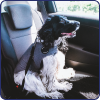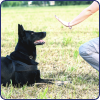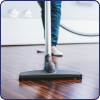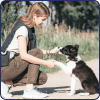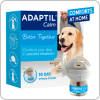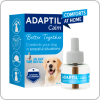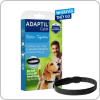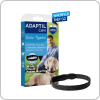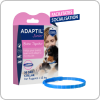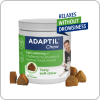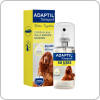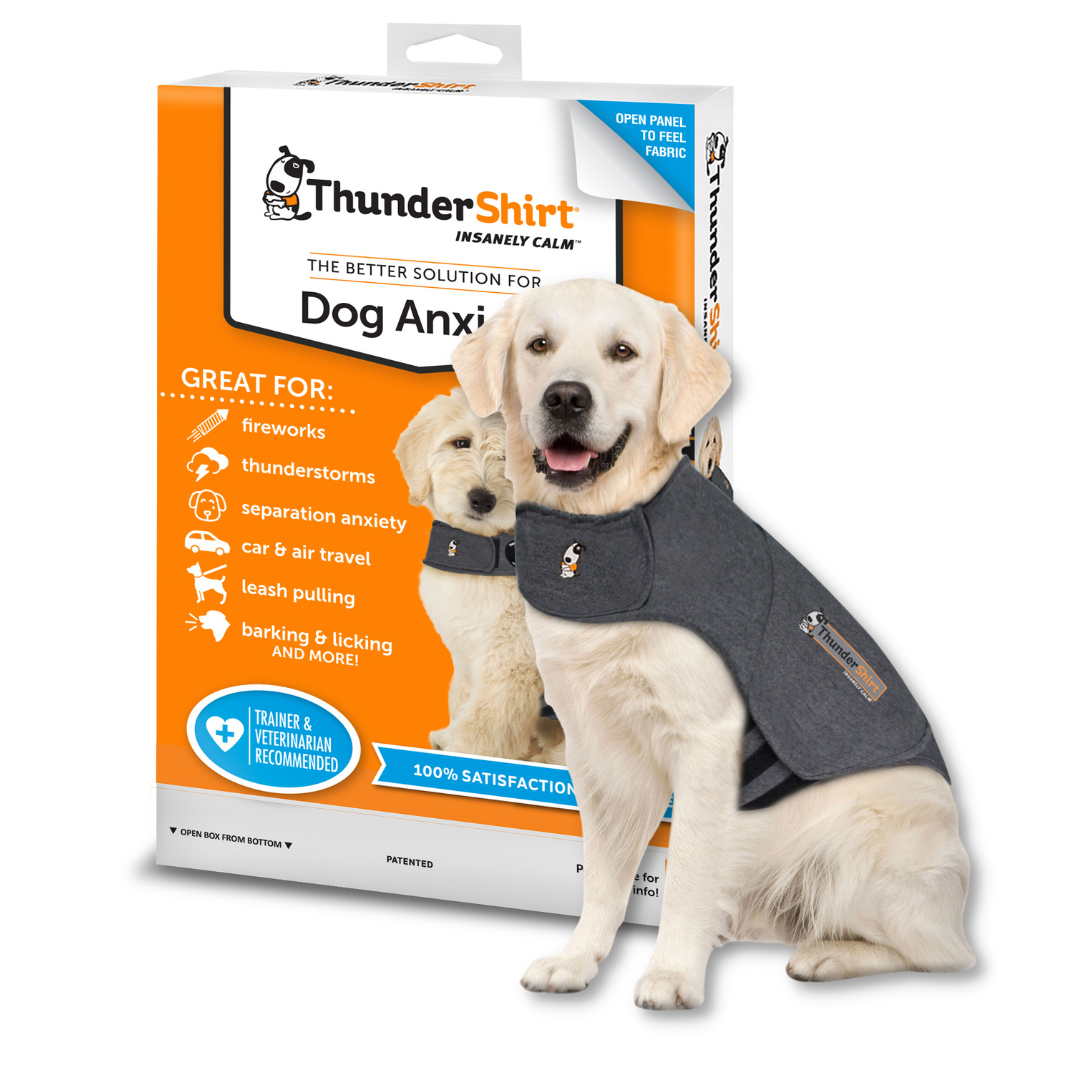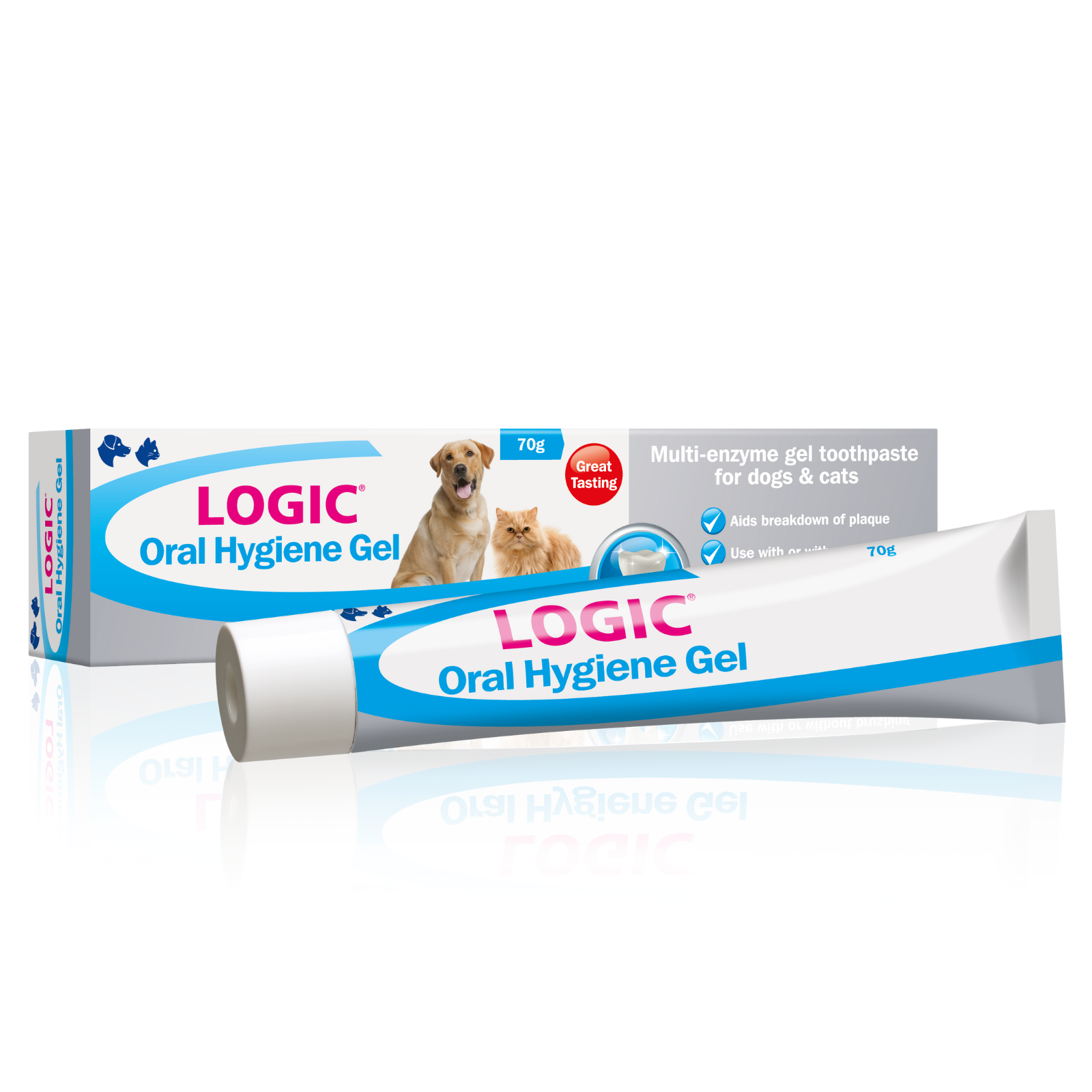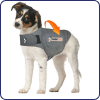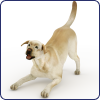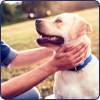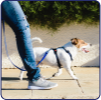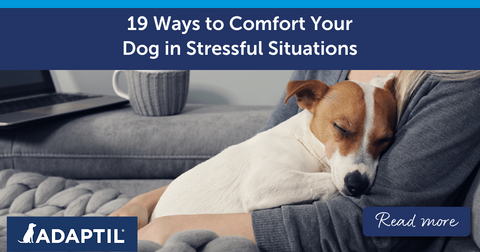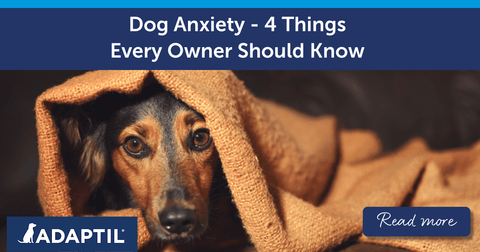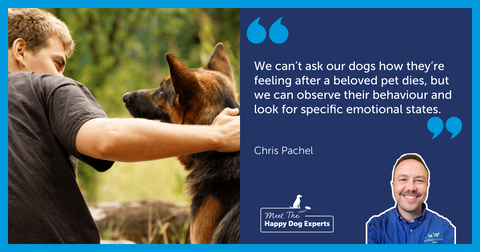Want to subscribe to our blog?
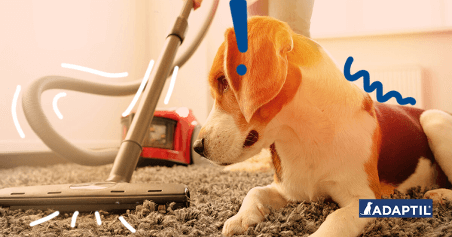
Help! My Dog is Scared of the Vacuum Cleaner, What Can I Do?
Written by Adaptil, published on April 18, 2023
Does the sound - or even the sight - of the vacuum cleaner spook your pooch and send them running? Unfortunately, though we don't want to scare our pets (and may not always want to do the cleaning!), vacuuming is a household chore that has to happen from time to time!
Luckily, if the noise and sight of a vacuum causes your dog to show signs of fear and concern, there are things you can do to help your dog be confident - and understand that the vacuum is nothing to worry about, even if it is loud!
The steps below are designed to help your pet develop a positive association with the vacuum, and over time, allow them to remain confident when it's time to clean the house!
8 Steps to help your dog be confident around the vacuum cleaner
1. Help them adjust gradually with exposure training
The first consideration when helping your dog adjust to the vacuum is to help them learn gradually. For some dogs, even the sight of the vacuum is enough to scare them! So work to gradually expose them - slowly! - to the vacuum in the home.
Before you begin any training, make sure that your dog is already feeling calm. You want your training to begin in a good way! The key here is to help your dog act normally and calmly around the vacuum - first, without it being turned on.
- Start by placing the vacuum in the room, without turning it on. Then bring your dog into the room and let them explore around the vacuum in their own time.
- If they are immediately spooked by the sight of the vacuum, try distracting them with play, and encouraging them to focus on you. You may need to repeat this multiple times until you get a calm reaction.
- Be sure to praise and reward your pet for calm behaviour around the vacuum, and reinforce this with a reassuring voice, so they develop positive feelings about the presence of the vacuum.
2. Reward positive behaviour
If you reward your dog each time they react in a positive way around the vacuum, they will start to develop a positive association! So while training, make sure your dog knows that when they see the vacuum, there is a treat to be had!
To build their confidence - with the vacuum still off - help your dog move near the vacuum by feeding a treat, moving closer, and feeding another treat. This can help them understand not to be spooked whenever they see the vacuum standing around the house!
3. Ask a friend to help
Once your pet is calm and confident around the stationary, switched off vacuum, it's time to help them adjust to the sight of the vacuum moving.
For many dogs, seeing the vacuum move around can cause concern - or be mistaken as a chase game. With the vacuum still off and silent, have a friend slowly move the vacuum short distances in the room, while you reassure your pet. Give your pooch a few treats for staying calm (not reacting fearfully or chasing) when the vacuum is moving, and slowly increase the movement and closeness to your pet over time. Never chase the dog with the vacuum!
If your dog is inclined to chase or consider attacking the vacuum when it moves, use a 'no', 'sit' or 'stop' command - but keep moving the vacuum. Though it's tempting to stop moving the vacuum, this may accidentally teach your dog that attacking the vacuum stops it. Instead, have the person moving the vacuum move away from the dog, and wait for your pet to be calm.
4. Always watch your dog's body language
Throughout any training it's important to make sure your dog is relaxed, so that they can learn and create positive associations.
It's important to monitor your dog's reactions and body language[2] throughout training - and if you notice that your pet is anxious or nervous, always stop. Negative reactions are a sign that you may be progressing a little too fast for your pet, and need to slow down next time. For example, the vacuum may be coming a little too close to your pet, or moving too much. Gradual is key!
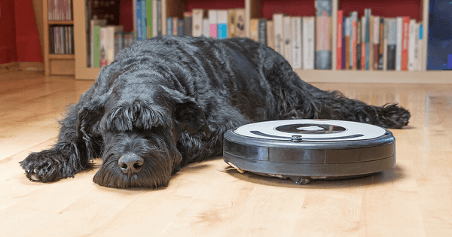
5. Help your pet adjust to the noise
Once your dog is confident around the vacuum, and isn't spooked by the sight of it moving, it's time to help them adjust to the sounds it makes.
- Again, ask a friend to help - have them turn the vacuum on in a separate room to you and your dog (with the door shut) for a short period of time.
- With the vacuum on, reassure your dog, and reward them with treats for remaining calm. Repeat this until your pet is happy and calm whenever they hear the vacuum switched on.
- Next, repeat the process with the door open. Once your dog can remain calm with the vacuum on and the door open, start to increase the length of time that the vacuum is on for.
- Next - all the while checking that your pet is still relaxed - start to gradually move the vacuum closer to the room with you and your dog in it. This should be done in stages; moving the cleaner a little way at a time, turning it on, then stopping and rewarding your dog. Don't combine the noise with the movement of the vacuum just yet.
- Continue the process until your dog is calm and confident while they can both see and hear the vacuum (without it moving)
- Once your dog is happy for the vacuum to be turned on in the same room as them, gradually increase the time that the cleaner is on for.
It is also wise to occasionally move the cleaner near your dog (while it is switched off) so that they continue to accept the movement. Again, never vacuum towards your dog - you don't want to spook them and undo your hard work together!
6. Work to introduce both together
The final step is to combine the sound of the vacuum cleaner with the movement of cleaning.
- Start by switching between noise and movement - before you combine them; with the vacuum off, move it around then stop. Next, while the vacuum is still, switch it on so your dog can hear the noise.
- Once your dog is comfortable with both, try turning the vacuum on, and moving it a short distance.
- Gradually work with your pet to increase the amount of time the vacuum is on, and the distance you move it.
Praise and reward your dog whilst the vacuum cleaner is on and moving. Gradually increase the duration so that you build up to vacuuming a room, and then a couple of rooms etc with your dog
7. Remember, reward, reward, reward!
Rewarding calm behaviour at every stage with treats and praise is crucial to help them know that they are doing a good job for staying calm!
Never punish your dog for reacting to the noise or sight of the vacuum as this can only make them more fearful or unsure. If they show signs of uncertainty, always stop, go back to the previous step and wait until they can respond calmly. With your help, they will soon learn that it's ok!
8. Move your dog elsewhere if they are still concerned
If your dog really doesn't like the vacuum at all, you can always move them elsewhere while you clean! Try to train your pet to the stage where they can be calm in another room while the vacuum is on. Distracting them with toys, or muffling the sound with the radio or television may also help!
Of course, if your dog experiences extreme anxiety, it's always best to seek the advice of your vet.
Using an ADAPTIL Calm Home Diffuser can help to support your dog while they are learning, and can reassure your dog at home, helping them to stay calm when faced with unexpected sounds. ADAPTIL Calm Home Diffuser is clinically proven to help calm and relax your dog by creating a reassuring environment at home.
Following our expert tips will help to ensure your bond with your dog goes from strength to strength.
Make sure to join our community for weekly advice from our dog behaviour experts as well as product offers and competitions.
 Related Posts
Related Posts
Legal notice The information collected is intended for Ceva Santé Animale and the group in order to manage your requests. This information can be shared with service providers in order to organize their management. In accordance with the General Data Protection Regulations, you have the right to access, rectify and limit the processing of your data. You can also, in certain cases, object to the processing, withdraw your consent and request the deletion and portability of your data. For any request in relation to your personal data, please visit this page.


